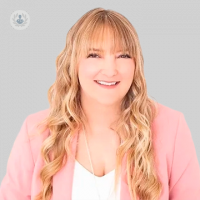What is hormone replacement therapy?
Autore:In her latest online article, esteemed GP and women’s health expert Dr Nikki Ramskill explains everything you need to know about HRT for menopause. She explains what this treatment entails, the signs you may need HRT and how to go about starting HRT.

What is hormone replacement therapy (HRT)?
Hormone replacement therapy is a treatment that replicates the female hormones oestrogen and progesterone. During menopause, the levels of these hormones in your body decrease, leading to menopausal symptoms. HRT aims to restore adequate circulating levels of oestrogen to alleviate these symptoms.
If you still have your uterus, taking oestrogen alone can cause the lining of your uterus to thicken, which can be harmful if left unmonitored. Therefore, you also need progesterone to counterbalance the effects of oestrogen. Progesterone safeguards your uterus from the thickening effects of oestrogen, so if you commence HRT, ensure you are using both oestrogen and progesterone in some form (unless you do not have a uterus).
What are the signs that you need hormone replacement therapy?
There are numerous symptoms of menopause, so this list is not exhaustive. Signs and symptoms include:
- General fatigue
- Menstrual periods that are heavier or lighter than normal, more or less frequent, last longer or shorter, or stop altogether
- Brain fog (lack of concentration and mental clarity)
- Achy joints
- Dry and itchy skin
- Dry eyes
- Heart palpitations
- Recurrent UTIs
- Poor sleep
- Night sweats and daytime hot flushes
- Reduced libido
- Vaginal dryness
- Sore vulva
- Irritability and tearfulness
- Anxiety and feeling unable to cope
- A general sense of feeling "off" without an obvious reason
How is HRT administered?
If you have a uterus:
You require a combination of progesterone and oestrogen. Oestrogen can be administered as a combined pill, combined or separate patch, gel, or spray. Progesterone can be given in a combined pill or patch, a separate pill, or a Mirena coil if it is less than 5 years old. Vaginal oestrogen cream can be used without progesterone if it is solely for vaginal, vulval, or urinary symptoms.
If you still have periods:
You should receive sequential combined HRT, where the treatment varies throughout the month to match your menstrual cycle. For two weeks, you will take oestrogen only, and for the other two weeks, you will take both oestrogen and progesterone. If you have a Mirena coil, you can use oestrogen-only HRT in the form of patches, gels, or sprays.
If your periods have stopped for over a year:
You should receive continuous combined HRT, where the treatment does not vary throughout the month and you should not experience bleeding. Some women may have initial spotting, but it should settle. Persistent spotting may indicate an issue with your endometrium (the lining of your uterus) and should be investigated.
If you do not have a uterus:
You only need oestrogen, which can be administered as a patch, gel, or spray. You can also use vaginal oestrogen cream if most of your symptoms are related to this area.
How can I start HRT?
The best course of action is to speak to your GP. Many GPs are understanding of what you are experiencing and will be keen to assist. If the GP you consult is not confident in prescribing HRT, seek a second opinion until you receive the necessary support. Alternatively, you could request a referral to a menopause specialist. Unfortunately, there is a long wait on the NHS, and unless you opt for private care, you may have to accept this delay. Insurance companies typically do not cover menopause treatments, which is a notable oversight. A private specialist can help initiate treatment, after which you could go to your NHS GP for ongoing prescriptions. Don't forget to use a prescription prepayment certificate to minimise your costs.
Dr Nikki Ramskill is a renowned GP and women’s health expert based in Milton Keynes. If you would like to book a consultation with Dr Ramskill you can do so today via her Top Doctors profile.


